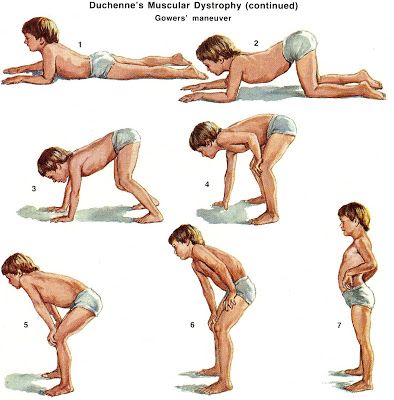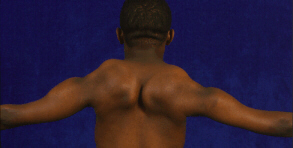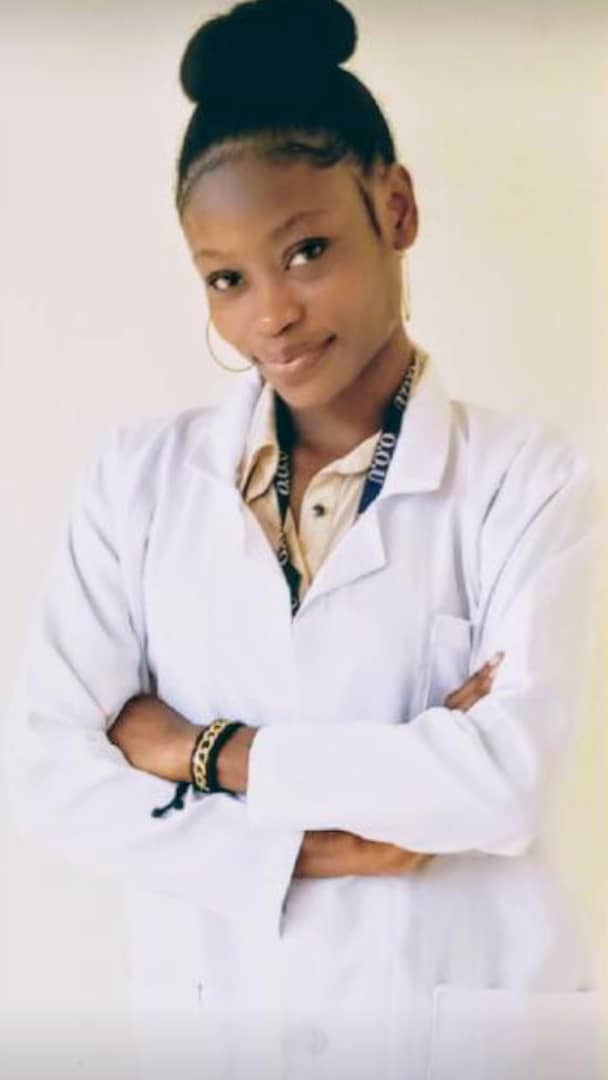
Our muscles play a vital role in carrying out our daily activities. Any abnormality with them can greatly affect those activities depending on how severe the abnormality is. Among such abnormality is muscular dystrophy, a rare condition that generally leads to wasting of the muscles which this article would be dwelling on.
WHAT IS MUSCULAR DYSTROPHY?
The word “dystrophy” is from the Greek words dys, meaning “difficult” and troph meaning “nourish”. Therefore, Muscular dystrophy is a group of inherited muscular disorders that leads to weakening of the voluntary muscles (skeletal muscles) and generally causes wasting of the muscles affected due to inadequate or defective nutrient supply.
WHAT CAUSES MUSCULAR DYSTROPHY?
Muscular dystrophy is mostly caused by a mutation in the protein dystrophin which is needed to build and develop healthy muscles. Dystrophin helps in mechanical stability and also regulates skeletal calcium levels. This mutation causes changes in the muscle fibres that are involved in the muscles ability to function and so progressively leads to disability. Muscular dystrophy is genetically inherited and the pattern of inheritance varies according to the type of muscular dystrophy. It could be inherited as a recessive or dominant X linked disorder. This is a major reason why it is more common in males. This is because the gene for dystrophin is located on the X chromosome. Since a female has two X chromosomes (two dystrophin genes), the mutation could be recessive in females. It should be noted that there is another X chromosome which might be without the mutation (this Gene may or may not be passed on to her offspring depending on which of the X chromosome is passed on to form XY of male sex ). However, it is important to note that some studies have shown that females with just one mutated Gene can exhibit symptoms of muscular dystrophy. Meanwhile in males, the sex chromosomes are XY chromosomes so inheriting a mutated X chromosome would lead to pronounced defects and the individual starts to develop the symptoms soon after birth. Also, muscular dystrophy could be due to an error that occurs during replication of the DNA sequence coding for the protein, dystrophin.
TYPES AND SYMPTOMS OF MUSCULAR DYSTROPHY
There are over 30 different types of muscular dystrophy with different symptoms, degree of muscle weakness and also prognosis. The major sign is progressive muscle weakness and specific symptoms begins at different ages depending on the type of muscular dystrophy. The types have all been classified into nine groups. Below are the various groups of muscular dystrophy with their symptoms:
Duchenne muscular dystrophy

This is the most common type. It develops at childhood and generally affects boys but studied have shown that females who are carriers might also have milder symptoms. The symptoms becomes clinically evident at age 3 or when the child starts walking and generally the patient loses the ability to walk at the age of 12. The symptoms may include:
- Delayed growth
- Bone thinning
- Frequent falls
- Difficulty sitting or standing up
- Trouble walking
- Abnormal curving of the spine ( scoliosis)
Difficulty in breathing and swallowing. Heart weakness could happen at the latter stage.

Becker muscular dystrophy
This is similar to duchenne muscular dystroph. It is a milder type and progresses more slowly. The symptoms starts around teenage years but might not occur until mid 20s or even early 30s. It affects mostly the arms and legs. It is also most common in males. It has the same symptoms as duchenne muscular dystrophy. Additional symptoms include:
- Walking on the toes ( due to inability to stand fully on both feet)
- Muscle cramps
Congenital muscular dystrophy
According to its name, this type starts at birth. It affects both male and female. This is unlike the other types of muscular dystrophy with defect in dystrophin gene, the congenital dystrophy is due to defects in other proteins linked with the dystrophin-glycoprotein complex. Dystrophin is part of a complex known as dystrophin-glycoprotein complex involving several other proteins. This complex helps in the structural arrangement of the muscle. So, a defect in this complex would lead to muscle weakness and wasting. Also, some forms of congenital muscular dystrophy are characterized by brain defects like hydrocephaly (a congenital abnormality in which fluid accumulates in the cerebral ventricles (brain), thereby causing enlargement of the skull and compression of the brain leading to destruction of much of the neural tissues). Symptoms of congenital muscular dystrophy include:
- Muscle weakness
- Inability to sit down or stand up without support
- Scoliosis ( abnormal curve of the spine)
- Difficulty in swallowing
- Joint defects
- Seizures due to abnormality in the brain
- Intellectual impairment
Myotonic muscular dystrophy
This is the most common form of adult muscular dystrophy. It is also known as Steinert’s disease or dystrophia myotonica. It is an autosomal dominant condition. That is, it affects one of the other chromosomes (autosomes) instead of the sex chromosomes. It is of two types; the more common myotonic muscular dystrophy type 1 (DM1) and the less common myotonic muscular dystrophy type 2 ( DM2). They differ in the DNA sequence where the mutation occurs. This mutation results in myotonia which is the inability of the muscles to relax after contraction. The facial and neck muscles are mostly affected. The symptoms includes:
- Drooping facial muscles
- Weak neck muscle resulting in difficulty in lifting or turning the neck
- Difficulty in swallowing
Fa-cio-sca-pu-lo-hu-me-ral muscular dystrophy
It affects both male and female although less severe in females. It usually affects the facial, hip and shoulder muscles. It usually starts during teenage years but could occur during childhood or late adulthood. Symptoms includes:
- Wing like appearance of the shoulder blades
- Difficulty chewing or swallowing
- Drooping facial muscles
- Slanted shoulders

Oculopharyngeal muscular dystrophy
It occurs in adulthood around the ages of 40-70 years. It results in weakness of the muscles of the face, eyelids and neck. Symptoms are:
- Vision impairment
- Difficulty in swallowing
- Droopy eyelids
Distal muscular dystrophy
It is also called distal myopathy. The onset could be as early as age 20 but symptoms usually starts between ages 40-60. The progress of the defect is slow and it affects muscles of the forearm, hands, legs and feet. Symptoms are:
- Initial weakness in the calf (back of the leg) muscles
- Difficulty in walking
- Difficulty in gripping
Emery-Dreifuss muscular dystrophy
It is characterized by muscle weakness and shrinking of the upper arm and lower leg. It affects more males than females and usually begins around childhood and early teenage years. Symptoms include:
- Weakness in the upper arms and lower legs
- Cardiac and respiratory problems
DIAGNOSIS AND CHANCE OF SURVIVAL
It is advisable to seek medical attention if you notice any muscular weakness combined with clumsiness and falling for no apparent reason. Since there are different groups of muscular dystrophy which affects different muscle type, diagnosis would be based on the results of various tests carried out. Such tests are;
- Genetic test
- Muscle biopsy
- Electromyography for checking the activation signal of the muscles
- Computed tomography scan (CT scan)
- Magnetic resonance image scan ( MRI scan)
The prognosis depends on the form of muscular dystrophy. Those groups with very severe symptoms like cardiac and respiratory problems tend to have a high mortality which can be reduced if managed well while the groups with less severe symptoms may not affect the life expectancy at all.
WHAT IS THE CURE?
There is currently no cure for muscular dystrophy, though various researches are being done to find a cure but there are different therapies and treatments which could help manage the symptoms. They include:
- Support and adequate care
- Use of low dose steroid drugs to improve muscle tone and reduce muscle wasting
- In the case of skeletal deformities like scoliosis, surgery could be done to correct the deformity
- Medication and surgery for heart problems
- Physiotherapy to improve motility
- Use of respiratory aid in the case of a respiratory problem
Proper management coupled with adequate care and support improves the prognosis of muscular dystrophy

Oyewole Ibukun is currently a Medical student of Olabisi Onabanjo University. She has a passion for seeking knowledge with a creative, detail oriented and analytical mindset.
